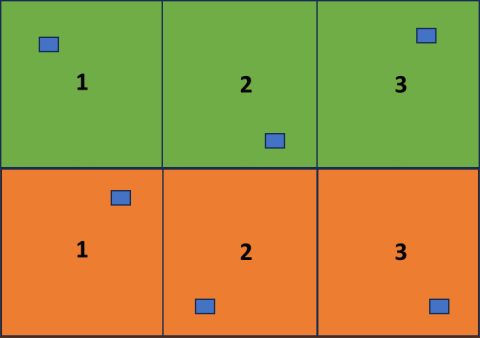Welsh Herbal Ley Projects
Are multi-species swards as diverse as Welsh farms?
A Pan-Wales projects that provides an opportunity to further explore the possible productivity and environmental gains that multi-species swards may provide on Welsh farms, in comparison with conventional swards.
Multi-species swards, often referred to as herbal leys, are temporary swards that consists of a mixture of grasses, legumes and herbs. The inclusion of a herbal ley into a farm’s grazing rotation is increasing in popularity in Wales, with a wealth of benefits seen to soils, forage and livestock, when managed appropriately.
Given the complexity and contrasting characteristics of herbal leys to conventional grass swards, their establishment and management differ to perennial ryegrass and clover swards, in order for them to thrive. Natural site conditions, such as soil type, structure, chemistry and climate will also impact the ley’s success. Existing research has looked at some of these factors, along with investigating particular impacts of herbal leys on specific sites. However, there are still key research gaps.
Through a replicated field trial on multiple farms within Farming Connect’s Our Farms network across Wales, the productivity and environmental impacts of a herbal ley reseed and a conventional grass sward will be compared. These impacts include sward and livestock performance. The project also offers an opportunity to investigate the impact of varying site conditions (i.e. differing farms on a range of soil types) on the leys’ success.
What will be done?
A chosen field on each participating farm from Farming Connect’s ‘Our Farms’ Network will be ploughed, and split in half for reseeding purposes (green and orange areas in Figure 1 below). Recent soil sampling results for the chosen fields will be used to determine nutrient requirements in the seedbed (if any). Both seed mixtures will be sown at a rate of 34.6 kg/ha.
Some of the participating farms have sown at the end of the Summer 2023 and the project will commence on additional farms duringSpring 2024 due to the farms’ reseeding schedule.
A chosen field on each participating farm from Farming Connect’s ‘Our Farms’ Network will be ploughed, and split in half for reseeding purposes (green and orange areas in Figure 1 below). Recent soil sampling results for the chosen fields will be used to determine nutrient requirements in the seedbed (if any). Both seed mixtures will be sown at a rate of 34.6 kg/ha.
Some of the participating farms have sown at the end of the Summer 2023 and the project will commence on additional farms duringSpring 2024 due to the farms’ reseeding schedule.
Figure 1. Project field set-up. Green areas indicate the replicated herbal ley plots (n=3) and the orange areas indicate the replicated grass-clover plots (n=3). The blue areas represent the stock-excluded areas for data collection (exact location of these will be discussed with the individual farmers).
As seen in Figure 1 (Plots 1, 2 and 3), each field will be split into a rotationally grazed system. Plot division, along with the timing and regime of grazing will depend on the field area, ley establishment success, along with stock availability.The livestock chosen to graze the field (lambs on most farms) will be split into two equal groups (in terms of numbers and age/weight) to graze the herbal ley and the grass/clover sward independent of each other. The stock-excluded areas set-up via the use of grazing cages will be randomly located on uniform areas of the fields.
Which species are included in the seed mixtures?
Herbal ley - a total of 14 species, including Perennial Ryegrasses, Timothy, Meadow Fescue, Red and White Clover, Ecotain, Sainfoin, Chicory and Lucerne
Conventional grass ley - Intermediate and Late Perennial Ryegrasses, Clover Blend and Timothy
What data will be collected?
Data collection will include -
- Forage quality (macro- and micronutrient content)
- Species composition
- Liveweight gain measurements
- Blood sampling (macro- and micronutrient content)
- Faecal Egg Count (FEC) sampling
Further data will be collected on some farms, including measurements of below-ground biodiversity abundance.

